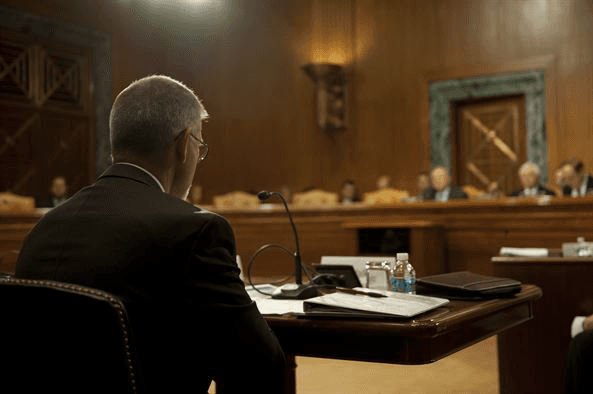Having Employees is Risky
Creating a workplace of respect is a win-win proposition.
He could feel the heat rise in his cheeks as a small bead of sweat rolled off his forehead and down to the tip of his nose. With a flick of his index finger, the drop of sweat was quickly removed.
“Could you, uh, repeat the question?” Bill Thomas asked as he looked over at the judge and then back to the opposing attorney.
“Please explain what your firm has done to prevent the events which Miss Johnson claims have occurred?” replied EEOC lead attorney, Mark Jackson.
Bill’s mind raced. He thought about the claims of sexual harassment Sherry Johnson had leveled against a member of his management team. While he didn’t doubt her claims, he truly couldn’t believe that the behavior had continued for three months even after she reported it to her boss.
“I, uh, I mean we as a company would never condone this behavior,” Bill stated as authoritatively as he could. “We have a policy against it! It’s in our employee handbook, I believe. Isn’t that right, Janet?”
Janet Baker, Bill’s HR Director, squirmed in her seat, unsure if she was supposed to--or even allowed to--respond.
“Thank you, Mr. Thomas,” came Jackson’s reply, essentially ending Bill’s fumbling for an answer. “Just so I’m clear… Are you saying that your effort to protect your employees from discrimination and harassment in your workplace was the possible insertion of a policy statement in your handbook?”
“Well, uh, yes, I mean, no. I mean, everyone knows that the company frowns on this stuff!” Bill stammered with a rising note of defensiveness.
“So, let’s say the policy is in your handbook,” Mark interrupted. “When was your handbook last updated? When was the last time the policy itself was communicated to employees? What…”
“Objection!” interjected Bill’s attorney. “How many questions will counsel ask before allowing my client to answer?”
“Sustained. Mr. Jackson, please allow the witness to answer one question at a time,” directed the judge. “Mr. Thomas, you may answer the questions if you can remember them.”
“Uh, well, to be honest, I’m not entirely sure when our handbook was last updated,” began Bill. “And as I far as I know, employees are asked to read and agree to the workplace conduct policy on their first day.”
“So, the accused harasser read and agreed to comply with the workplace conduct policy on his first day?” asked Mark Jackson, one of the EEOC’s winningest attorneys.
“Absolutely,” replied Bill confidently. “Janet makes sure of it.”
“Okay,” said Jackson. “When was he hired?”
“Excuse me?” asked Bill.
“The date, Mr. Thomas. When was the accused hired?” repeated Jackson with a hint of irritation in his voice.
“I have no idea!” Bill said, almost shouting now. “He’s been here longer than I have! Probably twenty years or more! What does that have to do…”
Jackson interrupted him. “I think we’ve heard enough, your honor. This witness, the CEO of a successful manufacturing company, has done virtually nothing to protect employees from discrimination and harassment in his workplace. He essentially trusts employees to remember a piece of paper they read and signed during their first day on the job.”
Bill’s heart sank. He glared across the room at his HR Director, who decided at that moment that she needed to check her phone for some important information. He looked to the left and made eye contact with company attorney and CFO Harry James. Harry shook his head ever so slightly, and with eyes slightly widened, mouthed the words… “We’re in trouble.”
-----------------------------------------------------
If reading the above account made you as uncomfortable as it did me while I wrote it, then it did its job. Unfortunately, while the story above is fiction, stories like it play out in real life all too often.
Having employees is a risky proposition, but we often don’t invest much in mitigation strategies for that risk. We buy insurance in case our buildings burn down. We invest in security systems to prevent the loss of valuable equipment or information. We even pay IT experts to prevent data breeches which could ruin our business.
The EEOC has been very clear about what they consider to be responsible corporate behavior for the prevention of discrimination, harassment, and retaliation: Effective training, clear policies, solid reporting procedures, and responsiveness when incidents occur. It’s even spelled out what is viewed as effective training. I’ve seen those expectations, and the watching of an awkward, outdated, sexual harassment video from the seventies is not it. In fact, the EEOC has essentially sent the message that if you “check the box” with a policy statement and some weak online training, you won’t receive any real credit for preventing bad practices in your workplace.
We encourage clients to see this is simple risk management . It can help protect you financially, but best of all, it helps you ensure a safe, respectful, and fair environment for employees.
We offer a program called “Workplace of Respect™” that meets the EEOC’s standards of effective training. Leveraging adult learning theory and brain science, it uses a common-sense approach by appealing to the participant to treat others with decency and honor. While providing the basic legal information, it’s intended to change hearts and minds as people start to see others as valuable and deserving of respect. Since leaders at all levels have a special responsibility to act as agents of the organization, the program has a leader supplement. This supplemental material pulls no punches as it lays out expectations for supervisors, managers, and senior leaders.
For more information about this program, click here.










